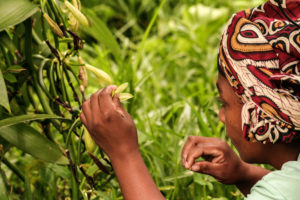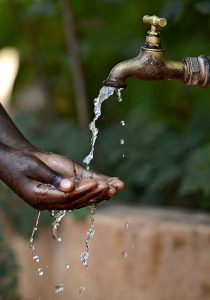Taste the Waste of Water documentary launched at the 2012 World Water Week
The short documentary “Taste the Waste of Water” was launched today at the World Water Week to highlight the issue of water and food waste. The short film is produced by the award-winning filmmaker Mr. Valentin Thurn, Schnittstelle, THURN GbR, Germany for SIWI in collaboration with FAO, and focuses on the issue of food waste.
To further highlight this issue, a group of international thought-leaders joined the producer, SIWI and FAO in their call for action to cut waste in a joint op-ed, published on National Geographic:
FOOD WASTE – MORTGAGING OUR WATER FUTURE
No child to bed hungry
At the first World Food Conference, in Rome in 1974, Mr. Henry Kissinger made a laudable pledge, “In ten years’ time no child will go to bed hungry”. There was reason for optimism. For years, global food production increased faster than rate of population growth. The number of people suffering from undernourishment was gradually pushed back. Widespread use of high yielding varieties of seeds, massive investments in irrigation and other arrangements for increased production contributed to tangible returns for farmers as well as for consumers. For about two decades, the green revolution meant a boost to food security and livelihoods for hundreds of millions, primarily in Asia. Still, by the mid-1990s about half a billion was reported as undernourished. From then on, the number of people going to bed hungry started to increase, again.
Big surplus of food
Paradoxically, statistical information continued to show positive figures on food production and the amounts of food available on the market. Awesome figures on increasing numbers of people who are food insecure are related to poverty. Most of the bottom one billion has limited access to the food produced. For lack of money and bargaining power, they also lack access to other basic goods and services e.g. water.
This deplorable situation is remarkable in view of the fact that an estimated 1.3 billion tons of food produced is lost and wasted, corresponding to about 170 – 180 kilos per capita, year or about a third of what is produced. Overeating provides an equally uncomfortable comparison; 1.5 billion people over age 20 are overweight and obese.
But we are not just talking about food. We are talking about THE major use of water and especially the misuse of it. On average, it takes a liter of water for each kilocalorie raised. The daily diet of a poor person, which may be in the order of 1,800 to 2,000 kcal, costs in the order of one or two tons of water, while the amount of food that the rich people demand could take five tons and more. It’s thus not just about wasting food that people need, it’s about alleviating the shortage of water and make more worthwhile uses of a limited and highly variable resource possible.
High and multiple costs for limited gain
There is thus no shortage of food but rather a surplus. Naturally, it is essential to produce enough of food for a growing and increasingly wealthy population. But if a large chunk of the produce is lost, spoiled, discarded or in other ways misused, it makes sense to broaden the perspective and identify strategies that link production and sustainable diets for a growing population.
Purely in economic terms, the value of losses and waste is estimated at about £160 billion ($250 billion or 200 billion Euros). What company with an ambition to stay in business could accept production losses of the order of one third? It is simply not sensible to throw away every third or fourth item of products that have required so much effort and resources to produce. Why should consumers and decision makers accept it? While poor households spend a significant part of their disposable income on food, expenditure on food in rich countries is currently in the order of 10 – 15% of the household budget. But spending in shops is only one of the budget items. We also pay through our tax bills. Out of the EU’s total budget of slightly less than 150 billion Euros (~ £118 billion or $187 billion) about 40% is used for agricultural policy. Subsidies, which are part of this policy tend to stimulate production irrespective of regional and global food security considerations. It is mindboggling that a conservative estimate of the economic value of the global food waste is higher than EU’s total budget and almost double the total global development assistance.
Although the economic figures are staggering, the unnecessary high toll on natural resources and environmental implications are more worrisome. All food produced has consumed water, occupied land, contributed to greenhouse gas emissions and had other environmental impacts. These are real costs that may soon prove to be unacceptable since they erode the prospects for a sound and livable future for a large part of the world’s burgeoning population.
A multiple win option at reasonable cost
It’s time for a novel and much more pragmatic approach. What if we focused on what can be achieved, NOT ONLY by producing and supplying more but by making better use of what is available? If losses and waste of food are reduced by half, the potential water savings only from irrigation would be in the order of 450 cubic kilometers globally. That is equivalent to six times the annual flow of Nile water into Lake Nasser or more than half the amount of water used by the industrial sector globally. This precious water could be better used to support aquatic and other environmental functions and also used to satisfy other urgent needs in society. True, reduction in losses will require investments in transport, storage and improved market access, especially for small producers in poorer countries. But to not invest is also costly. The difficulties for farmers in poor areas in moving their produce to more distant markets due to a lack of safe storage and transport facilities are particularly detrimental and imply missed opportunities when they produce bumper harvests. Temporary surplus will often be lost due to pests, mold and other vagaries of nature. For the small producer to bring the surplus from a benign year to the local market only means price collapse.
The challenge is quite different in the rich parts of the world where waste at the end of the supply chain is a relatively bigger problem. Consumers play a major role in this regard but blame cannot be put on one party but rather on the interplay between farmers, consumers and food industry, retailers, restaurants and other food outlets. In the end, the burdens of the misuse of resources and the food produced are carried by the public. And we are all consumers.
Go ahead with good old pledges!
The level of global food waste and the associated consequences have reached absurd proportions. It is time to renew good old pledges. When the Food and Agriculture Organization of the United Nations, FAO, was established in 1945, it had reduction of food losses within its mandate. At the first World Food Conference, in 1974, reduction of post-harvest losses by 15% was suggested and it was agreed to bring about a 50% reduction by 1985. For various reasons the pledges have been silently disregarded and ignored.
Future starts now!
The good news is that several important actors are currently lining up in efforts to promote a resource saving society together with proper nourishment for a growing world population.
Recent initiatives are promising. For instance, reduction of food losses is an important item on FAO’s agenda. In January 2012, a resolution was passed in the EU Parliament calling upon the EU members to halve food waste by 2025 and to take measures that would prevent the generation of such waste, for instance, through the reform of date labeling. Corporate sector initiatives are welcome.
The roadmap to a reduction of food losses and waste include: investments in storage for farmers, on site processing of food, improved roads and fair market access, better packaging, negotiations and awareness raising about real cost and real value of water and food, and not least, responsible consumer behavior in a world of finite and highly variable resources.
Reducing losses and waste of food, and thus water and other resources, requires joint and coordinated actions across the supply chain, from producers to the beneficial use of the produce and in dialogue with policy makers. The future of our children and grandchildren will be different to the past and contemporary situation. In a generation, some nine billion people will be living in a world with immense opportunities but also in a world where natural resource constraints and environmental dynamics more and more affect individuals and society. One of the most tangible consequences of global warming is that the availability of water will be increasingly variable while also demand for it will increase. A prodigious waste of food is simply not a sensible option in a desirable future.
Signed by:
- Isher Judge Ahluwalia, Chairperson, Board of Governors, the Indian Council for Research on International Economic Relations (ICRIER)
- Margret Catley-Carlson, UN Secretary General Adviser and Patron of the Global Water Partnership
- Junguo Liu, Professor School of Nature Conservation, Beijing Forestry University
- Jan Lundqvist, professor, senior scientific advisor, SIWI
- Alexander Mueller, Assistant Director-General, FAO
- Julian Parfitt, Dr Principle Resource Analyst, Oakdene Hollins
- Brad Ridoutt, Principal Research Scientist, CSIRO Sustainable Agriculture Flagship
- Andrea Segré, Professor of International Agricultural Policy; Dean, Faculty of Agriculture, University of Bologna; President, Last Minute Market
- Valentin Thurn, filmmaker, author SCHNITTSTELLE – THURN GbR, Germany
- Mohamed Ait Kadi, President of the General Council of Agricultural Development, Morocco
- Chairing the Technical Committee at the Global Water Partnership.





